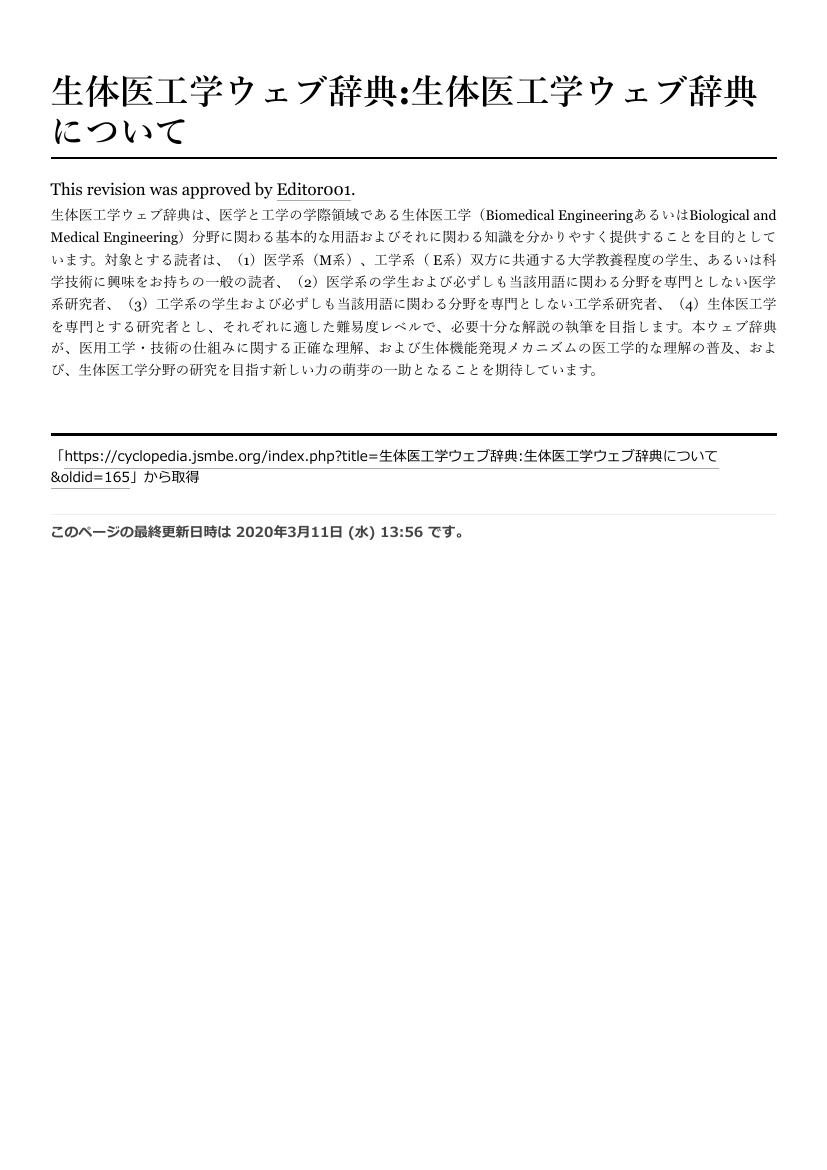2 0 0 0 OA 生体医工学ウェブ辞典(第一分冊)
- 著者
- 相川 慎也 芦原 貴司 天野 晃 有末 伊織 安藤 譲二 伊井 仁志 出江 紳一 伊東 保志 稲田 慎 井上 雅仁 今井 健 岩下 篤司 上村 和紀 内野 詠一郎 宇野 友貴 江村 拓人 大内田 研宙 大城 理 太田 淳 太田 岳 大谷 智仁 大家 渓 岡 崇史 岡崎 哲三 岡本 和也 岡山 慶太 小倉 正恒 小山 大介 海住 太郎 片山 統裕 勝田 稔三 加藤 雄樹 加納 慎一郎 鎌倉 令 亀田 成司 河添 悦昌 河野 喬仁 紀ノ定 保臣 木村 映善 木村 真之 粂 直人 藏富 壮留 黒田 知宏 小島 諒介 小西 有人 此内 緑 小林 哲生 坂田 泰史 朔 啓太 篠原 一彦 白記 達也 代田 悠一郎 杉山 治 鈴木 隆文 鈴木 英夫 外海 洋平 高橋 宏和 田代 洋行 田村 寛 寺澤 靖雄 飛松 省三 戸伏 倫之 中沢 一雄 中村 大輔 西川 拓也 西本 伸志 野村 泰伸 羽山 陽介 原口 亮 日比野 浩 平木 秀輔 平野 諒司 深山 理 稲岡 秀検 堀江 亮太 松村 泰志 松本 繁巳 溝手 勇 向井 正和 牟田口 淳 門司 恵介 百瀬 桂子 八木 哲也 柳原 一照 山口 陽平 山田 直生 山本 希美子 湯本 真人 横田 慎一郎 吉原 博幸 江藤 正俊 大城 理 岡山 慶太 川田 徹 紀ノ岡 正博 黒田 知宏 坂田 泰史 杉町 勝 中沢 一雄 中島 一樹 成瀬 恵治 橋爪 誠 原口 亮 平田 雅之 福岡 豊 不二門 尚 村田 正治 守本 祐司 横澤 宏一 吉田 正樹 和田 成生
- 出版者
- 公益社団法人 日本生体医工学会
- 雑誌
- 生体医工学 (ISSN:1347443X)
- 巻号頁・発行日
- vol.Dictionary.1, pp.1-603, 2022 (Released:2022-03-31)
1 0 0 0 モーショントラッキング機能を備えたラット二重課題実験系の構築
- 著者
- 松尾 康平 海住 太郎 中園 智晶 渡邉 慶 鈴木 隆文
- 出版者
- 一般社団法人 電気学会
- 雑誌
- 電気学会論文誌C(電子・情報・システム部門誌) (ISSN:03854221)
- 巻号頁・発行日
- vol.136, no.9, pp.1324-1334, 2016-09-01 (Released:2016-09-01)
- 参考文献数
- 30
Dual-task paradigm is a behavioral procedure in which subjects are required to perform two independent tasks in parallel, each of which involves a distinct stimulus-response association that leads to a unique goal. Although dual tasks are widely used in human studies, they are seldom used in animals. One such rare case was a rat simultaneous temporal processing (STP) task, in which rats were asked to time two different intervals simultaneously(1). However, there are a few limitations in this paradigm, such that, for example, each of the two component tasks was not clearly associated with a unique stimulus-response association. In this report, in order to better characterize temporal dual-task performance in rats, we developed a modified version of the STP task that was comprised of two clearly-divided component tasks, and equipped our experimental system with a novel video-based motion tracking system. We show that even under this more rigidly controlled dual-task setting, rats are able to time two different intervals virtually without interference, and that our tracking system can simultaneously detect head-direction and body-location of a rat with high accuracy. These results suggest that the present experimental paradigm should be useful for investigating cognitive processes that underlie dual-task performance at both the behavioral and neuronal levels.
